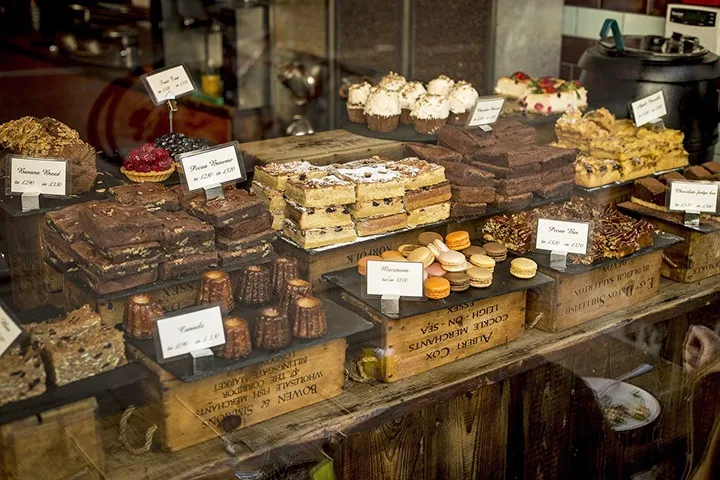High-Calorie Desserts May Not Be All That Bad After All

“If you indulge first, will you eat less overall ?”is an intriguing question posed by an article published recently by the American Psychological Association. From the abstract:
Across 4 experiments, this research is the first to uncover the interaction effect of food type (indulgent vs. healthy) and food presentation order (first vs. last) on individuals’ sequential food choices and their overall caloric intake*. This work showed that, when selecting foods in a sequence (e.g., at a buffet or on a food ordering website), individuals are influenced by the first item they see and tend to make their subsequent food choices on the basis of this first item. This notion can be utilized to nudge individuals into consuming less food overall.* In contrast to what one might intuitively assume, Experiment 1—a field study in a real-life cafeteria—showed that when an indulgent (healthy) dish is the first item, lower-calorie (higher-calorie) dishes are subsequently chosen and overall caloric consumption is lower (higher). Experiments 2 and 3 replicated these effects in the context of ordering food on a website. Experiment 4 further revealed that high (vs. low) cognitive load alters the identified interaction effect, such that when an indulgent dish is the first item, higher-calorie dishes are subsequently chosen.
I propose to enter this research into the official record as supporting an update to an oft-repeated assertion, “Life is short, so order dessert first.”
From the original release: “If I Indulge First, I Will Eat Less Overall: The Unexpected Interaction Effect of Indulgence and Presentation Order on Consumption,” by David Flores, PhD, Tecnológico de Monterrey; Martin Reimann, PhD, University of Arizona; Raquel Castaño, PhD, and Alberto Lopez, PhD, Tecnológico de Monterrey; Journal of Experimental Psychology: Applied, published online Feb. 7, 2019.
There’s always room for another study (dessert cultural reference, here). I know when I have a prix fixe menu with desserts listed is does change the way I think about ordering the other courses.
I read this and found it interesting, although there were some limitations. One thing that stuck out was that the “indulgent” dessert was only 189 calories (lemon cheesecake). This must have been a really modest slice of cheesecake, and was only 120 calories more than the “healthy” dessert of fruit. If a dessert-loving patient of mine chose a 189-calorie dessert, I know that would probably fall under the heading of “progress”. In the real world, the results might be different if the options were fresh strawberries or a 500+ brownie sundae.
What also might account for the results in this study is that by choosing the indulgent dessert first, a person is essentially “planning ahead”, whereas if there’s no visual cue for dessert until later down the buffet line, there has been no (or at least less) planning for dessert. People may still want dessert but failed to “plan” for it at the start.
I’d love it if desserts were included on restaurant menus when you sat down, so you can do some of the “planning” rather than on a separate menu that you’re given only at the end of the meal. That’s probably another study…